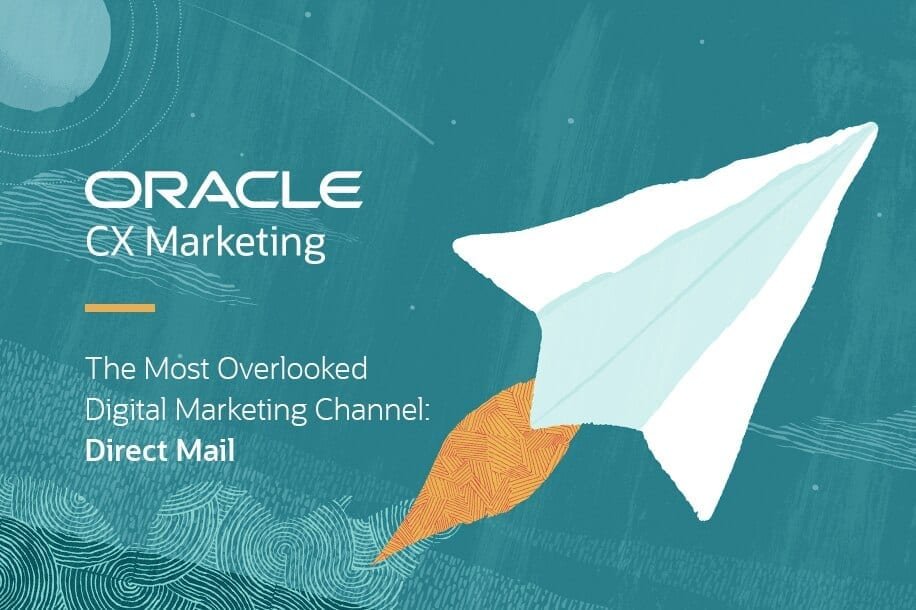Direct mail has changed. Many marketers still think of it as printed letters, catalogues and postcards for the mass market. While that’s still true for some direct mail, direct mail has adopted many new tricks, tips and tactics over the years. With digital printing, smart presses, and integration with other channels, direct response can mirror much of the functionality we love in email marketing, including:
Personalization of direct mail content for both images and copy,
Individually attributable results, so that a campaign’s return on investment can be calculated,
Segmentation, so direct mail pieces go to people who are mostly likely to respond,
Marketing automation software that sends the right direct mail pieces to the right people at the right time, and
Omnichannel orchestration which takes direct mail out of its silo and integrates it with broader cross-channel marketing efforts.
Let’s talk about each of those in turn.
Personalization
Dynamic content that’s tailored to individual recipients is powerful. In fact, in the email channel, Oracle Marketing Consultants consider personalization to be the most impactful tactic they can employ. It can be just as powerful with direct mail.
I’ve helped numerous clients produce really dynamic, modularized, direct mail. It’s very similar to personalization in email. For instance, the mailing panel headline is your subject line, since it’s on the front of the envelope or address side of the postcard along with the address panel, analogous to your email sender name. For the letter or image side of the postcard, high quality inkjet and laser printers can print totally customized text next to a magazine-quality offset printed photograph or graphic for a very polished feel. This allows for the same level of customization that’s possible with dynamic HTML text within an email.
For example, I once built a direct mail campaign for a top global hospitality brand that had more than four billion combinations with all the modules we had built. It could even change the imagery based on your age and family makeup. If you were in your 20s or 30s and unmarried, you received imagery of young couples. If you were a married couple, you received family-related content. And if you were in your late 50s or older, you received grandparent-related content.
That direct mail campaign was paired with a triggered email campaign. Altogether, it was one of the most sophisticated and complex email or direct mail campaign setups I’ve ever worked on.
Having newly pooled and integrated their customer data flows across their properties, the client was excited to work this wealth of data to better connect with their customers. We ultimately ended up eliminating variables that didn’t influence conversions to make the program even more agile. We showed that the boundaries between email and direct mail were almost non-existent when it came to the ability to personalize content.
Individually attributable results
Thanks personalizing direct mail, brands can also include promo codes unique to the recipient. You can even use custom phone numbers that allow for sophisticated tracking, a tactic that’s easier to do with the widespread adoption of digital phone systems. This allows you to tie any action back to that individual and add it to their profile.
If you’re driving a broader action where an individual promo code doesn’t make sense, you can drive direct mail recipients to a landing page that you promote only via direct mail. This equates to click tracking, allowing you to calculate the return on investment generated by your direct mail campaign. Similarly, you can also use a phone number that you only promote in direct mail to help attribute responses accurately.
Segmentation
Just as with email, you can deliver direct mail campaigns only to the people you target. This allows you to control costs that can quickly erode your return on investment. For example, you can use direct mail to target recipients that:
Have responded to a direct mail campaign in the past X months,
Have made a purchase via any channel in the past X months,
Has engaged with the brand via multiple channels, or
Requested a physical reminder.
Because you don’t need permission to send direct mail, you can also use it to reach customers who haven’t opted in to receive promotional email, SMS, and push campaigns. You can even use direct mail to try to get these customers to opt in to one or more of your digital channels, or, to re-engage customers who have become inactive in any of those channels.
Whereas in the email channel you use segmentation to reduce churn and to maintain engagement to protect your deliverability, the principal use of segmentation in direct mail is to control costs and sustain the channel’s ROI.


